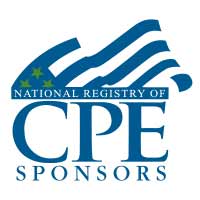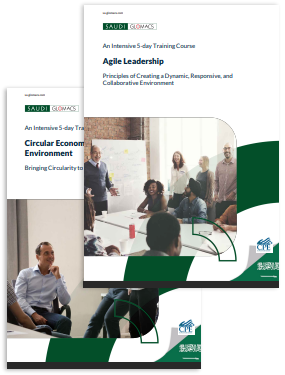An Interactive 5-Day Training Course
Electrical Installations in Hazardous Areas
Classification, Safe Handling, Operation & Maintenance
Course Overview
Preventing the unintentional ignition of explosive atmospheres is a critical safety and economic aspect of all petroleum and chemical plant operations.
In this Electrical Installations in Hazardous Areas training course, you will learn how to:
- Identify and Quantify the Hazardous Areas
- Select appropriate Electrical Equipment and Instruments for those areas
- Recognise the Different Methods of Protection, e.g. Ex d or Ex ia and how they work
- Install, Inspect and Maintain the Certified Equipment
Training Outline
DAY 1: Introduction and History
- A Brief History of Industrial Fires and Explosions
- Materials
- Understanding the important characteristics of hazard materials and how they behave when they are ignited. Looking at the data tables and seeing how flash point, boiling point, L.E.L. etc. influence our approach to the materials
- Area Classification
- A look at the techniques and the procedures that result in the formal allocations of zones zero, one and two
- Sources of Hazard, duration of release, extent of zones, calculations, nature of hazard and release characteristics
DAY 2: Area Classification
- Apparatus Groups and Temperature Classes
- How apparatus and hazard materials are matched together in terms of ignition energies, flame transmission characteristics and ignition temperatures? How groups and T Classes have changed over the years and from country to country and where to find the information to make comparisons?
- Source of Ignition
- A look at some of the possible sources of ignition, e.g. static electricity, light metal thermite reactions, friction etc., which can occur in Hazardous Areas. Also considering some of the steps which can be taken to eliminate them
- Methods of Protection
- Considering the recognised methods of protection. The fundamental concept in each case and the zones in which they may be employed
- Ex d Flameproof
- Ex i Intrinsic Safety
- Ex e Increased Safety
- Ex p Pressurised
- Ex N Type N
- Ex m, Ex o, Ex q, Ex s
- Exercise
- Ex d Flameproof
- Considering in depth the concept of Flameproof protection, how it works, how is must be installed, how it must be inspected & maintained. Looking at weatherproofing, corrosion, gaps, fasteners, etc
DAY 3: Equipment Inspection Exercise Session 1
- Examining samples and answering questions about them
- Intrinsic Safety
- As for flameproof, an in depth look at the subject considering minimum ignition energies, associated apparatus and systems, simple apparatus, IS clean earth, floating systems, system matching, etc
- Intrinsic Safety Installation
- Segregation of cables, screens and armour, earthing and bonding, induction and invasion, creepage and clearance etc
- Increased Safety
- An in-depth look at this concept of protection making comparisons with flameproof, and stressing the vital importance of correct installation. Also looking at weatherproofing IP rating, CTI, stoppers and bolts, derating etc
- Equipment Inspection
DAY 4: Ex p Pressurised Apparatus
- A close examination of this method of protection, what it can be applied to, when certification is possible and how to maintain it. Where pressurised rooms fit in and how uncertified pressurised enclosures may be used in zone 2
- Type N
- A thorough examination of type N considering non-sparking, enclosed break, energy limitation, and restricted breathing concepts. Also making comparisons with the concepts of protection already covered in detail
- The Less Common Types of Protection
- A look at Ex m, Ex o, Ex q, and Ex s considering each in turn and pointing out the safety critical features. Also considering combined or dual certification and the combination of many concepts of protection into one item of equipment
- Equipment Inspection
- Labels, Marking and Certificates
- A look at the codings, certificate numbers and other essential markings on labels and certificates. Including a paper exercise to identify equipment
DAY 5: Installation, Inspection and Maintenance
- Considering the guidance of National codes of practice in terms of wiring and cabling, identification, isolation, inspections and maintenance. Examining inspection schedules and referring back to the concepts of protection to ensure that the attendees are comfortable with the inspection requirements for all types of equipment. Prioritising repairs, i.e. which failures are immediately life threatening and which could become so in time
- Cable entries
- Considering cable and conduit entries to all types of enclosures and protection concepts. Also looking at adapters and reducers, plugs and correct selection in each circumstance
- Equipment Inspection Exercise Final session
- Legislation
- What the Law has to say, standards, certificates, codes, European directives, the HSE and how it all ties together?
- Considering the records that should be kept by a company in order to manage a Hazardous Area installation
- General Discussion
Certificates
- On successful completion of this training course, GLOMACS Certificate will be awarded to the delegates
- Continuing Professional Education credits (CPE) : In accordance with the standards of the National Registry of CPE Sponsor, one CPE credit is granted per 50 minutes of attendance
Accreditation


GLOMACS is registered with NASBA as a sponsor of Continuing Professional Education (CPE) on the National Registry of CPE Sponsors. NASBA have final authority on the acceptance of individual courses for CPE credit. Complaints regarding registered sponsors may be submitted to the National Registry of CPE Sponsors through its website: www.learningmarket.org.
All Training Seminars delivered by GLOMACS by default are eligible for CPE Credit.


About Saudi Glomacs
At Saudi GLOMACS, we specialize in delivering world-class training courses in Saudi Arabia and across various international locations. Our training courses are tailored to meet the unique demands of Saudi Vision 2030 and the Human Capability Development Program, focusing on empowering Saudi citizens and enhancing workforce skills. We offer diverse courses spanning leadership, management, engineering, and technical disciplines to cultivate expertise and drive professional growth. Our flexible learning options—whether in-person, online, or in-house—ensure accessibility and convenience for individuals and organizations alike.
With over 30+ years of experience through the GLOMACS global network, we are committed to delivering innovative, results-driven training solutions. Our expert instructors combine industry knowledge with dynamic teaching methods, fostering practical skill development and long-term career success. By choosing Saudi GLOMACS, you're investing in personal excellence and contributing to the Kingdom’s sustainable economic growth and vision-driven transformation.
What do you need to learn next?
Check our list of courses or let us customize a course for you.
View courses



